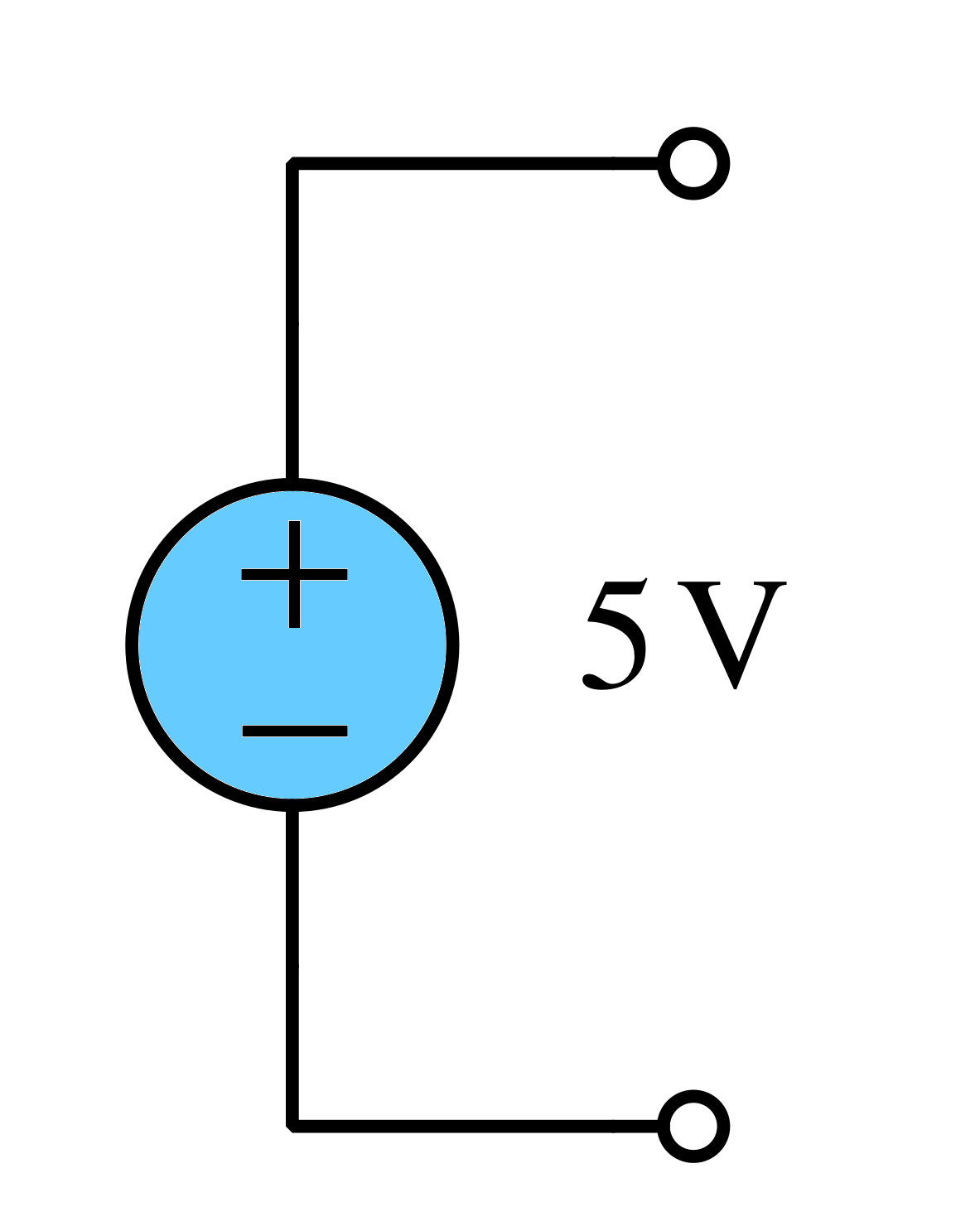Independent and Dependent sources
Independent sources¶
Independent voltage sources provide a constant specified voltage or current irrespective of other conditions within the circuit. Put simply, a 1mA current source will maintain a continuous flow of 1mA through its terminals, regardless of voltage across it (open or short-circuited). It's essential that the current source symbol includes at least an indication of the current flow direction and either a specified value or a variable representing its current. Similarly, a 1V independent voltage source will maintain a 1V voltage difference across its terminals, irrespective of the load across it.
Dependent sources¶
Dependent sources in a circuit are those whose voltage or current output is determined by another voltage or current within the same circuit.
Voltage sources¶
An ideal voltage source provides a constant voltage regardless of the current flowing through it or the load connected to it. In other words, it has zero internal resistance and can deliver the specified voltage under all conditions. Ideal voltage sources are often represented by a symbol (e.g., a circle with a plus and minus sign) in circuit diagrams.
Types of voltage sources:
- Independent voltage source
- Voltage-controlled Voltage source
- Current controlled Voltage source
Independent voltage source¶
This fixed voltage source sets a predetermined voltage across two nodes. The voltage does not depend on any voltage or current in the circuit.

The symbol of an independent voltage source is a circle having two terminals labeled by the polarities.
More about ideal and real voltage sources : Ideal and real voltage/current sources.
Voltage controlled voltage source¶
This voltage source sets the voltage across two nodes determined by a voltage elsewhere in a circuit. It is a four-terminal device. Usually, a gain factor is associated with it. Since both input and output are voltages, the transfer function has the unit of V/V. A voltage-controlled voltage source with a gain of 1 is generally called a buffer.

The symbol of a dependent voltage source is a vertical rhombus having two terminals labeled by the polarities. A DC-coupled opamp is a practical example of a voltage-controlled voltage source.
Current controlled voltage source¶
This voltage source sets the voltage across two nodes determined by a current in a branch. The transfer function has a unit of V/A.

The symbol of a dependent voltage source is a vertical rhombus having two terminals labeled by the polarities. The controlling current is shown to flow from a resistor. The current could be flowing from any component.
Current sources¶
An ideal current source provides a constant current regardless of the voltage across its terminals or the load connected to it. In other words, it has infinite internal impedance and can supply the specified current under all conditions. Ideal current sources are often represented by a symbol (e.g., an arrow) in circuit diagrams.
Types of current sources:
- Independent current source
- Voltage-controlled Current source
- Current controlled Current source
Independent current source¶
This fixed current source sources a predetermined fixed current into a node. The current does not depend on any voltage or current in the circuit.

An independent current source's symbol is a circle with two terminals with an arrow sign showing the direction of the current.
Voltage controlled current source¶
The current into a node is defined by a voltage present in a circuit. The transfer function is A/V. Most of the transistors are voltage-controlled current sources.

The symbol of a voltage-controlled current source is mentioned above. It has two input terminals and two output terminals. The voltage difference between the two input terminals sets the current from the remaining two terminals.
A self-connected voltage-controlled current source is equivalent to a resistor.
Current controlled current source¶
A current present in a circuit defines the current going into a node. The transfer function is A/A. A BJT transistor can be considered a current-controlled current source.
